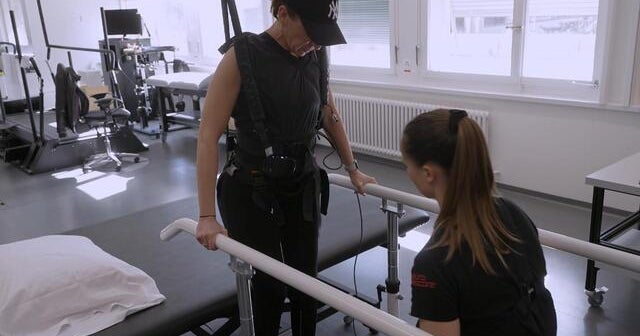Revolutionary Trial Offers New Hope for Spinal Injury Patients
In a landmark clinical trial, researchers have demonstrated that cutting-edge neurotechnology can help spinal injury patients regain partial mobility. The study, conducted at leading medical centers across the U.S. and Europe, combines spinal stimulation and physical therapy to reactivate dormant neural pathways. Early results, published this month, show unprecedented success, offering hope to millions living with paralysis worldwide.
Breakthrough Findings from the Clinical Trial
The trial involved 36 participants with chronic spinal cord injuries, all of whom had limited or no lower-body function. After six months of targeted electrical stimulation paired with intensive rehabilitation, 75% of participants regained some voluntary muscle control. Notably, two subjects could take assisted steps with walkers—a milestone previously deemed unattainable for long-term paralysis patients.
Dr. Elena Martinez, a neuroscientist leading the study at Johns Hopkins University, called the results “transformative.” “We’re not just improving quality of life; we’re rewriting the textbook on neural recovery,” she said. The team used implanted electrodes to deliver precise electrical pulses below the injury site, effectively bypassing damaged tissue and reconnecting signals between the brain and limbs.
The Science Behind the Innovation
Spinal cord injuries disrupt communication between the brain and motor neurons, often causing permanent paralysis. Traditional treatments focus on symptom management, but this trial targets neuroplasticity—the brain’s ability to reorganize neural pathways. Key advancements include:
- Adaptive Stimulation: Customizable electrical pulses adjust in real-time based on patient movement.
- AI-Assisted Rehabilitation: Machine learning algorithms optimize therapy regimens for individual progress.
- Non-Invasive Monitoring: Wearable sensors track muscle activity and neural responses.
According to a 2023 report by the World Health Organization, 250,000–500,000 people suffer spinal cord injuries annually. Less than 5% regain full mobility, underscoring the urgency of such breakthroughs.
Patient Stories: Lives Transformed
Among the trial’s success stories is Mark Reynolds, a 42-year-old former firefighter paralyzed in a 2018 accident. After 18 months in the program, he regained enough control to stand unassisted. “It’s like waking up from a nightmare,” Reynolds shared. “I never thought I’d feel my legs again.”
However, experts caution that the therapy isn’t a cure-all. Dr. Hiroshi Tanaka, a rehabilitation specialist at Kyoto University, notes, “While promising, these techniques require years of refinement. Not every patient will respond equally.” Challenges include high costs ($200,000+ per patient) and the need for ongoing therapy.
Ethical and Accessibility Considerations
The trial’s success has sparked debates about equitable access. Currently, the treatment is only available at specialized centers, raising concerns about disparities in healthcare. Advocacy groups urge policymakers to fund broader studies and subsidize costs. Meanwhile, researchers are exploring scaled-down versions, such as external stimulators, to reduce expenses.
What’s Next for Spinal Injury Research?
The team plans a Phase 3 trial with 200 participants by 2025, aiming for FDA approval by 2027. Parallel studies are testing gene therapy to repair damaged neurons, potentially complementing stimulation techniques. Private investors, including tech moguls, have pledged $50 million to accelerate development.
For patients and families, the trial represents a beacon of hope. As Reynolds put it, “This isn’t just about walking—it’s about reclaiming independence.” To support ongoing research, consider donating to the Spinal Recovery Initiative or advocating for expanded insurance coverage.
The road ahead is long, but for the first time in decades, the finish line is in sight.
See more WebMD Network



